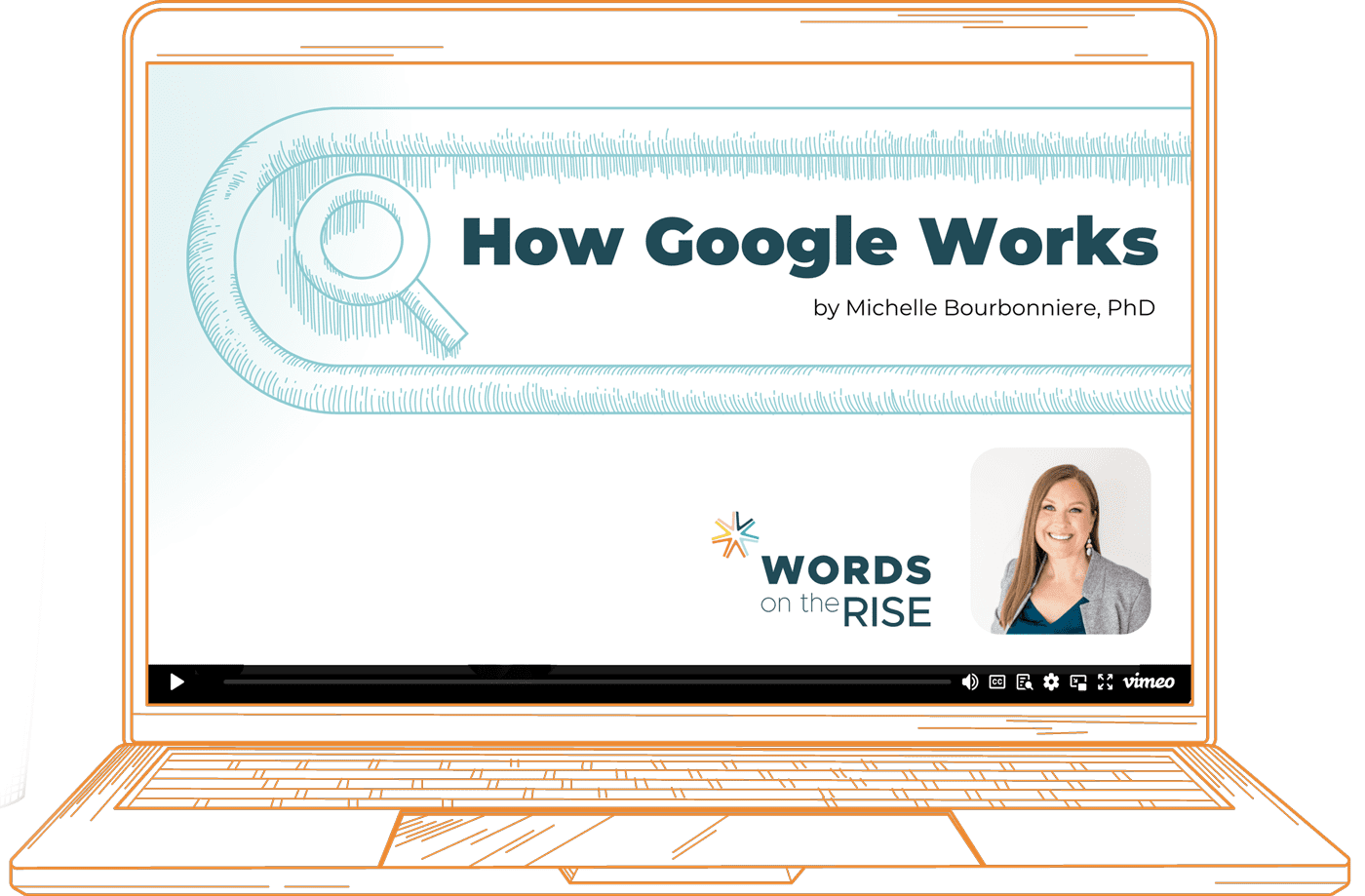So you’ve installed Yoast or another WordPress search engine optimization (SEO) plugin, like SEOPress or RankMath. Great move! That’s an essential first step to creating a WordPress website that rolls out the red carpet for search engines.
If you’ve installed an SEO plugin on your WordPress website, I bet most of your day-to-day interactions with it happen when you’re writing new content, because it’s hard to miss that SEO plugins have some … how shall we say … opinions about your writing.
In its quest to help you write SEO friendly content, Yoast (and other SEO plugins like it) measures your text up against a slew of predetermined metrics, and grades your content accordingly using green, orange, and red lights, like this:

Writing perfectly optimized content for search engines means amassing a satisfying collection of green smiley faces, right?
Think again.
In this post, I’m going to explain how SEO is really done.
Too many small business owners believe that as long as they’ve managed to write a post that makes [insert your SEO plugin here] happy, that Google is going to be happy about it too.
Sure, an SEO plugin is the right tool for ensuring you don’t make any big, make-or-break SEO mistakes (like not including your target keyword in the page title or HTML headers). For the basics of SEO content writing, by all means follow your SEO plugin’s writing advice.
But if optimizing your writing for SEO starts and ends at “green lights” you’re leaving a lot of clicks on the table. Yoast gives decent enough advice on how to write a more-or-less SEO optimized blog post, but it’s certainly not the only way to write an SEO optimized blog post.
Why? Because Yoast’s writing recommendations pretty much boil down to a one-size-fits all keyword density calculator and readability checker.
No matter which keyword you choose, it’s going to give you the same advice.
Google doesn’t work that way, and your readers don’t either.
So much more goes into making web writing great (not just passable) than keyword density, readability scores, and throwing in an adequate number of transition words.
Google Wants to Help You Find The Right Readers
Let’s back up. What’s Google’s goal, anyways?
Google is the ultimate matchmaker. Google is trying to figure out what each page on your website is about, so they can match you up with readers who are looking for the answers you provide.
Making it dead simple for Google to understand what your content is about is the first step in making sure that Google knows who to send to your website, and when.
The interface between you and your readers is search keywords.
Start by Picking an Accurate Keyword
Your first step in writing an SEO optimized blog post should be keyword research, which helps you identify what your audience is searching for online, and what words they use when doing that searching.
You can’t just throw anything in the “target keyword” box in your SEO plugin and expect amazing results.
Got your keyword? Great. Now, let’s find out what Google wants! Search the term yourself (in incognito mode) using Google search.
And then answer these three questions…
Question 1. What Type of Web Pages Appear?
This will show you if people searching your target keyword tend to prefer top ten lists, product reviews, how-to videos or … something else entirely. (SEOs call this identifying the “search intent,” or figuring out the “question behind the query.”)
Search intent isn’t always obvious, which is why you have to scan the Google results.
For example, say you’ve written an exhaustive 3,000-word article on the history and symbolism of red shoes. You’re dying to share it with the world and think “red shoes” would be a good keyword to target. Looking it up using a keyword tool reveals 45,000 people search it per month!
A quick check of the results for “red shoes,” however, reveals that people searching this phrase actually want to buy red shoes. They aren’t in the mood for a history lesson.
What you need to do is find is a keyword that helps Google play matchmaker between you and your fashion history buffs. A little more digging and you find out that about 450 people each month search for “red shoes meaning.” These people are eager to read what you’ve written. Target that search phrase instead, and watch the magic happen.
Question 2. Which Topics and Subtopics Are Included?
Once you’ve found your perfect keyword, click through to read at least the top five web pages currently ranking on top for your target keyword. Make note of common themes. Your goal here is to ensure the article you write answers the searcher’s question thoroughly and doesn’t skip over any FAQs that your audience wants to know about.
SEO Tip: Take note of the top three questions that come up in the “People Also Ask” box, which shows up on a majority of searches. Address these questions explicitly in your content, and you might be able to snag another spot in the search results for your target keyword.Question 3. How Can You Produce Something Even Better?
You’re the expert, not Google. You know your audience best. Dig deep and think about how you can create something that’s even better than what Google is serving up now.
Be the guide. Be the teacher. Share your knowledge generously and with authority.
Write for your readers, not for Google and not for Yoast. Why? Because original, genuinely helpful content will serve you and your business well for years. It builds your brand and helps drive sales … not just traffic.
Need some help with it?
This is exactly the process I follow when I create content briefs for my clients.
I can give you SEO writing instructions to guide you in how to write content that attracts the right people to your website (and converts them, too).




